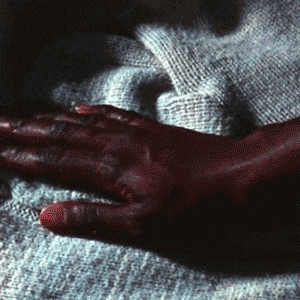A project by Dina Kelberman presented by Dazibao and broadcasted in partnership with the Internet Archive

Kelberman’s practice is one of obsessive collection and organization converted by a perfectionism that provokes interminable repetitions. Though her images are often sourced from the Internet, the artist doesn’t work within the random and fragmented semiotics of that medium. Instead, with a character of care and resourcefulness, she leans into that which is expressed through multiplicity or reiteration: “My work is about how everyone and everything is special, and so while specialness is not special, it is still pretty much the most exciting thing going.”
Dina Kelberman’s project Nervous will feature a series of video loops that compare and combine compulsive habits, recursively exploring the areas where comfort and anxiety are simultaneous. In the midst of Covid-19, these restless gestures for coping, once experienced privately by a minority, might suddenly become familiar to a vast majority who attempt to take cautionary measures. Instagram in this context and as a platform for the work, also speaks to a feeling both of necessity and of insatiability, while inducing the user/viewer in the repetitive, almost irrepressible gestures of tapping and scrolling.

The original footage used for Nervous comes from viewing hundreds of commercials and educational films spanning the 50’s to 90’s sourced from the Internet Archive’s extensive collections. Tiny moments found within these movies are edited into endless loops of small behaviors. The original innocuous context of these moments, intended to be level-headed and soothing, instead becomes nerve-wracking. Commercials for tough-acting cleaners and convenient appliances are now compulsive preoccupations. Educational films depicting the right way to do something, the solutions to problems, now are problems themselves. The means to improve your life have failed past the realm of diminishing returns into flat-out harm.
Nervous will run from June 1st to July 31st as an instagram residency at: @dazibaomtl #nervousdlk2020

Dazibao is a contemporary art center and non-profit organization dedicated to the dissemination and mediation of contemporary image practices, privileging artistic experimentation, enquiry and reflection related to current social issues.
Dazibao is dedicated to the development and presentation of original artworks by Canadian artists whose contemporary practices are founded on the image. Providing the public an opportunity to create links between local and global discourses, such works are presented alongside works by international artists thus contextualizing their relevance within a broader art ecology.
By questioning the discourses, uses and modes of disseminating images, Dazibao explores artistic as well as historical and social issues, sharing them with the various communities that make up Montreal’s diversity.
The reflections developed by Dazibao are conveyed by way of exhibitions, video programs, films, public artworks, books and special events. These activities are accompanied by a cultural outreach program that facilitates stimulating encounters with art and create conversations raised by societal issues.
Dazibao collaborates with numerous artists, curators, critics, researchers, and the university milieu and is involved in several ongoing partnerships with related or complementary organizations. Dazibao promotes equity, inclusivity, equality, diversity and cultural hybridization so that art can assert itself as a field of knowledge capable of facilitating a better understanding of the world around us. Offered free of charge, the activities organized by the center are open to all.